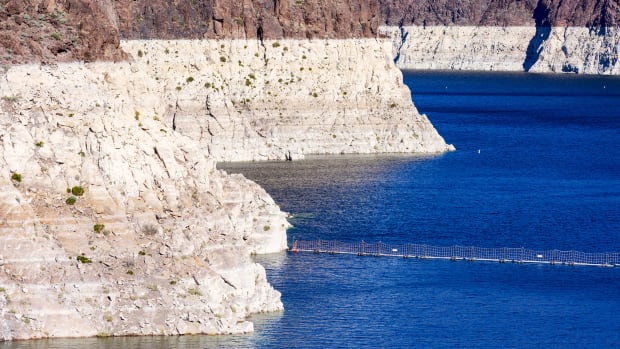
For a planet that is 75% water, it is a shame that there is a dangerous shortage of potable water for billions of people around the globe.
Industrialization has lifted countless populations out of poverty at the cost of perhaps permanent damage to the environment that we all rely on to survive.
Humanity is "at a crossroads" in its fight to manage droughts globally, according to the United Nations Convention to Combat Desertification.
"An upward trajectory in the duration of droughts and the severity of impacts, not only affecting human societies but also the ecological systems upon which the survival of all life depends, including that of our own species.” said Ibrahim Thiaw, Executive Secretary of the UNCCD.
Since 2000, the number and duration of droughts has risen 29%, according to the UN. From 1970 to 2019, weather, climate, and water hazards accounted for 50% of disasters and 45% of disaster-related deaths. Most of those disaster-related deaths occurred in developing countries.
This year, the U.N. expects more than 2.3 billion of the worlds 8 billion inhabitants to face water stress, including 160 million children who will be exposed to severe and prolonged droughts.
The organization estimates that 700 million people will be at risk of being displaced by drought by 2030.
So what can the industrialists who are contributing to this issue do to alleviate the problem?
Amazon (AMZN) Web Services has an idea.

AWS Plan to Battle Scarcity
By the time those 700 million potential victims are affected by water scarcity, AWS says it will be "water positive" by 2030.
What is water positivity?
It's the term used to describe an industry or corporation that makes more water available than it uses, according to the International Desalinization Association.
So how exactly does AWS plan to achieve this goal? The internet server arm of international conglomerate Amazon unveiled its plan to reach this goal in a blogpost this week.
The company says it has four pillars that support its ambitions:
- Efficiency
- Recycling
- Reuse
- Replenishment
AWS uses water primarily for cooling its data centers around the world, but the company is working on designing more efficient cooling systems.
“An AWS data center is a labyrinth of servers, routers, and networking cables, and all this hardware gets pretty hot, so we need to cool it. One of the ways we do this is with water," said Suresh Soundararaj, AWS principal mechanical engineer.
AWS currently uses evaporative technologies where hot air is pulled from outside and pushed through water-soaked cooling pads. The water evaporates and cools the temperature of the air sent into the server rooms.
AWS is devising a "free-air cooling" system with sensors that track weather parameters like temperature and humidity. Once temperatures outside drop to a safe operating range, the evaporative cooling system with automatically turn off and cool air from the outside will pass through a no water filter to cool the server rooms.
AWS says that its data centers in Ireland and Sweden already do not use any water to cool its data centers for 95% of the year using this method.
The company also says it is using recycled wastewater to lower its footprint.
AWS also says it has plans to return water to drought stricken communities through partnerships with non-profit organizations.
Lip Service vs. Legitimate Remedies
Globally, big businesses have pledged money and resources towards a greener future. According to Invesco strategist Brandon Knott, 90% of the world's gross domestic product is on a path toward a "net-zero carbon commitment."
Unfortunately, words don't always match action and if you ask executives, most will tell you that their companies aren't doing enough, according to a new survey.
A recent Harris Poll for Google Cloud survey of 1,491 executives across 16 countries found that while 96% had at least one program in place in the name of a greener future, 58% of executives said that their organization was guilty of greenwashing.
Greenwashing is the practice of marketing a company or organization so they appear more environmentally friendly.
The survey said 65% of respondents wanted to "advance sustainability efforts but don't know how to actually do it." Only 36% said their organizations even have the tools to measure their efforts.
Only 17% are using those measurements to optimize their performance based on the results.







